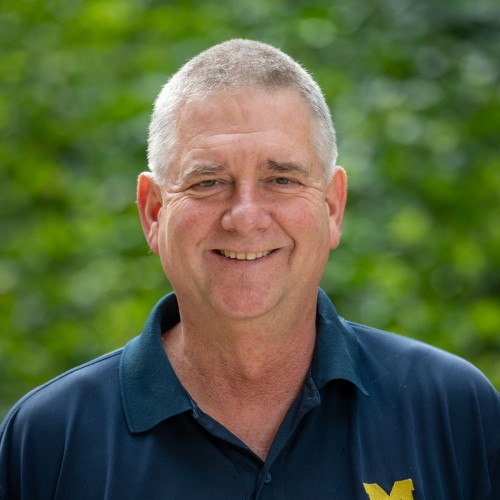
Available to mentor

-
Center MemberRogel Cancer Center
-
Center MemberCenter for Computational Medicine and Bioinformatics
The goal of our laboratory is to understand how an abundant class of "jumping genes," known as retrotransposons, affects the structure and function of human genomes. In particular, we study Long INterspersed Element-1 (LINE-1 or L1) retrotransposons. The average human genome is estimated to contain ~80-100 active LINE-1s that are able to mobilize (i.e., retrotranspose) to new genomic locations by a copy and paste mechanism termed target-site primed reverse transcription. On occasion, LINE-1 retrotransposition events can disrupt gene function, and de novo LINE-1 insertions have led to sporadic cases of genetic disease. Since starting my laboratory at the University of Michigan, we have used genetic, molecular biological, biochemical, and modern genomic and computational approaches to address the following questions: 1) What is the molecular mechanism of LINE-1 retrotransposition? 2) How do LINE-1 retrotransposition events affect the human genome? 3) What cellular factors promote or restrict LINE-1 retrotransposition? 4) How does LINE-1 retrotransposition contribute to intra- and inter-individual genetic variation? We welcome motivated graduate students and postdoctoral fellows to join our team. Please contact Dr. Moran ([email protected]) if you are interested in learning more about our research.
-
Sun C, Kathuria K, Emery SB, Kim B, Burbulis IE, Shin JH, Brain Somatic Mosaicism Network , Weinberger DR, Moran JV, Kidd JM, Mills RE, McConnell MJ. Nat Commun, 2024 May 17; 15 (1): 4220Journal ArticleMapping recurrent mosaic copy number variation in human neurons.
DOI:10.1038/s41467-024-48392-0 PMID: 38760338 -
Moldovan JB, Kopera HC, Liu Y, Garcia-Canadas M, Catalina P, Leone PE, Sanchez L, Kitzman JO, Kidd JM, Garcia-Perez JL, Moran JV. Nucleic Acids Res, 2024 Jul 22; 52 (13): 7761 - 7779.Journal ArticleVariable patterns of retrotransposition in different HeLa strains provide mechanistic insights into SINE RNA mobilization processes.
DOI:10.1093/nar/gkae448 PMID: 38850156 -
Luqman-Fatah A, Watanabe Y, Uno K, Ishikawa F, Moran JV, Miyoshi T. Nat Commun, 2023 Jan 13; 14 (1): 203Journal ArticleThe interferon stimulated gene-encoded protein HELZ2 inhibits human LINE-1 retrotransposition and LINE-1 RNA-mediated type I interferon induction.
DOI:10.1038/s41467-022-35757-6 PMID: 36639706 -
Ward JR, Khan A, Torres S, Crawford B, Nock S, Frisbie T, Moran JV, Longworth MS. Nucleic Acids Res, 2022 Oct 14; 50 (18): 10680 - 10694.Journal ArticleCondensin I and condensin II proteins form a LINE-1 dependent super condensin complex and cooperate to repress LINE-1.
DOI:10.1093/nar/gkac802 PMID: 36169232 -
Moran JV, Wilson TE. Cell, 2022 Sep 29; 185 (20): 3643 - 3645.Journal ArticleReverse transcriptase meets DNA, again: Possible roles for transposable elements in host DNA repair.
DOI:10.1016/j.cell.2022.09.012 PMID: 36179663 -
Moran JV, Gilbert N. 2022 Jun 1; Mobile DNA II, 836 - 869.ChapterMammalian line-1 retrotransposons and related elements
DOI:10.1128/9781555817954.ch35 -
Mortimer SM, Frisbie TJ, Moldovan JB, Nakamura M, Sandwith SN, Yin J, Moran JV. 2022 Encyclopedia of Life Sciences,ChapterChromosomes: Noncoding DNA (including Satellite DNA)
-
Wang Y, Bae T, Thorpe J, Sherman MA, Jones AG, Cho S, Daily K, Dou Y, Ganz J, Galor A, Lobon I, Pattni R, Rosenbluh C, Tomasi S, Tomasini L, Yang X, Zhou B, Akbarian S, Ball LL, Bizzotto S, Emery SB, Doan R, Fasching L, Jang Y, Juan D, Lizano E, Luquette LJ, Moldovan JB, Narurkar R, Oetjens MT, Rodin RE, Sekar S, Shin JH, Soriano E, Straub RE, Zhou W, Chess A, Gleeson JG, Marquès-Bonet T, Park PJ, Peters MA, Pevsner J, Walsh CA, Weinberger DR, Brain Somatic Mosaicism Network , Vaccarino FM, Moran JV, Urban AE, Kidd JM, Mills RE, Abyzov A. Genome Biol, 2021 Mar 29; 22 (1): 92Journal ArticleComprehensive identification of somatic nucleotide variants in human brain tissue.
DOI:10.1186/s13059-021-02285-3 PMID: 33781308